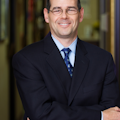COVID-19 is shorthand for coronavirus disease 2019. The virus itself is coronavirus and COVID-19 is the associated disease. Without doubt, the COVID-19 pandemic has had a greater impact on the dental profession nationwide than anything else during my career of nearly 40 years. The fluid nature of the pandemic, the uncertainty, inconsistent reporting, and overall anxiety are truly shaking the US to its core. Everyone involved in the delivery of dental care is largely in a state of limbo, which is also true for our patients. This global experience will likely result in permanent changes across a wide swath of life as we know it once the pandemic is over. What might this look like in the dental profession?
If all of the aerosols created daily in the dental office were visible, we would likely don a space suit before going to work. Just look at your glasses or face shield after treating a few patients. Personal protective equipment (PPE) such as disposable lab coats, masks, gloves, and protective eyewear are all important. But what do we all do once we put our handpieces down, be it an ultrasonic or high-speed handpiece? We take our mask off to talk to the patient. Sometimes we take off our safety glasses. What happened to the tiny droplets we just launched into the air? Do they just go away as soon as we’re done? Of course not. They are still airborne and will ultimately cover every surface in the office. Add to this the air movement from the heating and cooling systems in our practices and we start to understand why dental offices are notoriously covered with dust.
It is just a fact of life that dental offices have a lot of stuff in the air, including various microbes. Even with all that, there's never been a documented case of transference of disease in the dental operatory. That does not mean that transference is not possible, but there is one action we can take to reduce the airborne pathogenic microbes created every time we put a handpiece into the patient’s mouth.
Maintaining periodontal health and disease resolution in patients with chronic inflammatory periodontal disease (CIPD) is more important than ever—for everyone in the dental office, including ourselves. Depending on the severity, patients with periodontal disease have a predominance of gram-negative bacteria. The population of bacteria in the presence of disease skyrockets as well. The red complex bacteria are toxic and pathogenic. The bacteria associated with periodontal health are gram-positive and significantly less pathogenic than their disease-causing counterparts.
Unless we install negative pressure isolation rooms and wear space suits, aerosols are here to stay. But they can be made potentially less worrisome by reducing the number of toxic bacteria that become airborne in our offices every day. Just something to think about.
Would you like to learn more about the latest in oral-systemic research?
Write to Dr. Richard Nagelberg about topics you’ve read about in this blog or to submit items you’d like to see covered here.
Previous blog: “What’s coming down the pike in the dental profession?”
About the Author
Richard H. Nagelberg, DDS
Richard H. Nagelberg, DDS, has practiced general dentistry in suburban Philadelphia for more than 30 years. He has served on many advisory boards and as a consultant and key opinion leader for a variety of companies and organizations. Dr. Nagelberg is the Director of Medical Affairs at OraPharma, a division of Bausch Health US, LLC. His practice and other professional activities are centered on the impact dental professionals have beyond the oral cavity. Contact Dr. Nagelberg at [email protected].
Updated May 2022


